How Pagani Became One of the World’s Hottest Hypercar Brands
Horacio Pagani’s hypercars are a heady blend of agonizing beauty and uncompromising performance.
A day in early fall. The low, thick fog invades the valley, the wind is so weak it barely moves the leaves. The Emilian
countryside, in the province of Modena, Italy, stretches
for miles, pervaded by cultivated fields, streets, and rivers. Time has taken its toll on an asphalt road that separates two
long rows of trees. A short stop, it seems like the perfect frame to
take a picture.
In the flat and uniform light, the Pagani Huayra
Roadster, which costs just under $2.6 million, shines even brighter. There is an almost magical air, it seems as if time and the whole
world has stopped to contemplate the elegant and brazen beauty of
founder and chief designer Horacio Pagani’s latest creation.
The big 12-cylinder engine rumbles while the Huayra Roadster
maneuvers along the narrow road, under its tires the crackling of the
very fine white gravel.
A group of passing tourists comes up closer,
intrigued by what looks like a spaceship that has just landed from
afar; a flash of light tears through the clouds and illuminates the carbon blue texture of the bodywork. The soft lines, the accentuated
surfaces, a chassis that’s sporty and aggressive but at the same time
very refined, sublime.
The Huayra Roadster was six years in the making, “so everything had to come together as if it was a car carved out of a block of
Carrara marble,” as the Pagani website puts it.
Each feature of the
car responds to a unique language of style and a clear-cut aerodynamic requirement. The smallest detail is conceived for a purpose,
even the smallest piece of carbon fiber has its own meaning, and
complies with the stylistic meaning of the whole. Painstaking work
on the single parts, via digital and scale models, was carried out to
achieve a form that overall is homogeneous and original, merging
innovation and tradition.
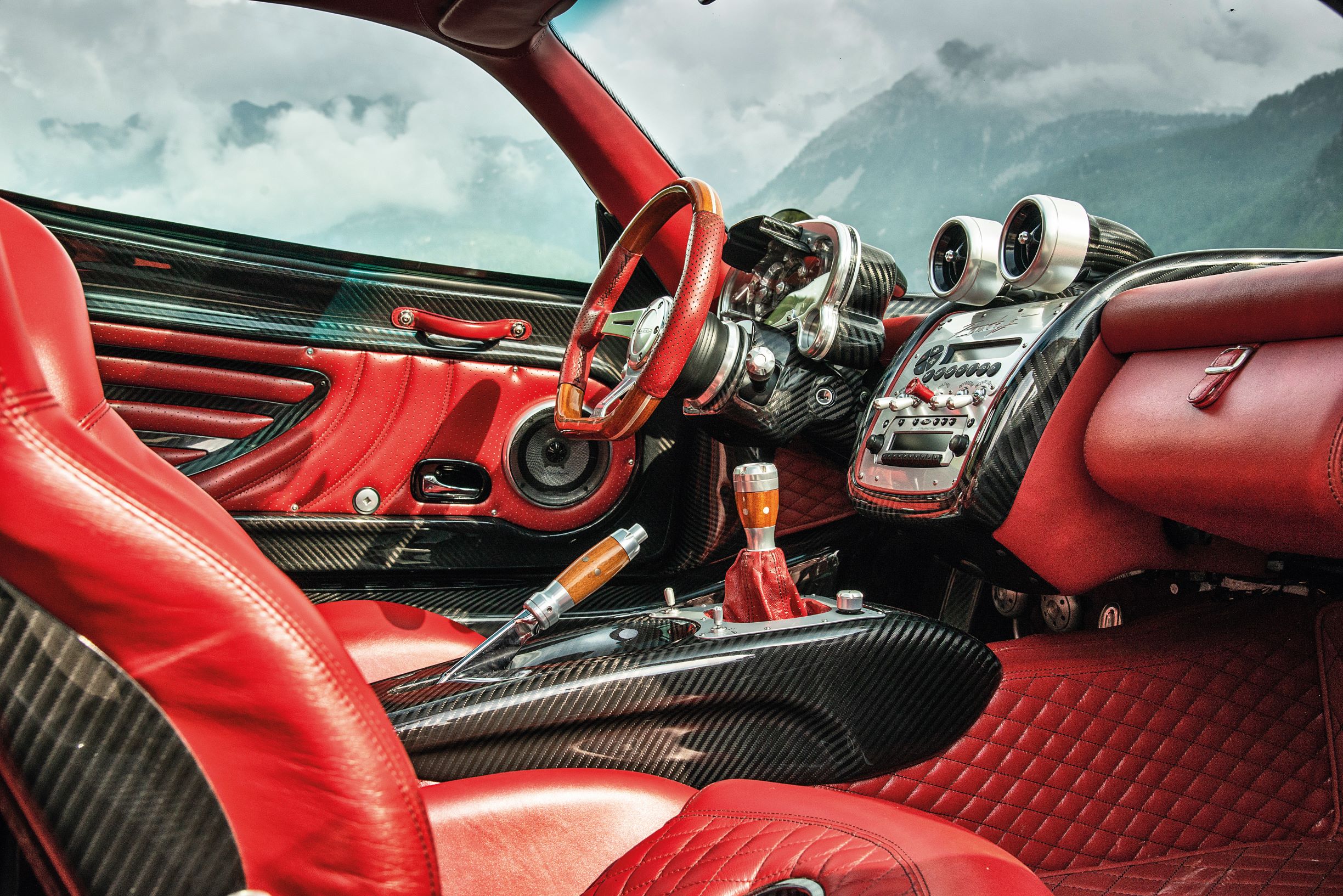
The 764-hp Huayra Roadster is first of all an idea, a work of art
on four wheels, a mechanical symphony where each and every component is tuned to play in unison. It is the expression of an emotion.
At the Pagani Automobili factory there’s a sign over the door
that points toward the old production area, now the experimental
division, that reads: “The client is our real employer!” Signed: Horacio Pagani.
Almost a mantra, one that those who work at Pagani
know by heart, from the production division to the assembly line,
from the carbonium laboratory to the marketing office. Horacio
himself, when he is asked to describe the designer’s work, usually
answers, to the point.
“At Pagani the aim of those who create the
project is to satisfy, according to the dictates of Leonardo da Vinci
and in line with our style, the client’s wishes, because, as my father
used to say, the real client is the one who comes back a second time.”
No one know this better than Brett David, CEO of Miami’s
Prestige Imports, one of the first Pagani dealers in the United
States.
David, who personally owns three Paganis, including a Pagani Huayra coupe named Project Vulcan, a special one-off model
called the Huayra L’Ultimo, and a Huayra Roadster, recently honored Horacio Pagani at the Miami Design District Concours Presented by Chopard
in the city’s Design District. The occasion was the 20th anniversary
of the very first supercar to bear the Pagani name, the Zonda C12.
“What appeals to me most about Paganis is the rarity of these
vehicles,” David tells Maxim.
“In a time like today, when automotive
manufacturers have created so many incredible vehicles, Pagani remains in a league of its own. While many might say this is because of
design or performance, to me it’s about the rarity of each individual
vehicle and the fact that Pagani owners worldwide unite as family.
Pagani and its local dealers, including myself, focus on the fact that
the experience of owning a Pagani is much greater and more unique
than owning any other sports car created. To me, a Pagani is not just
a vehicle, it’s a piece of performing art.”
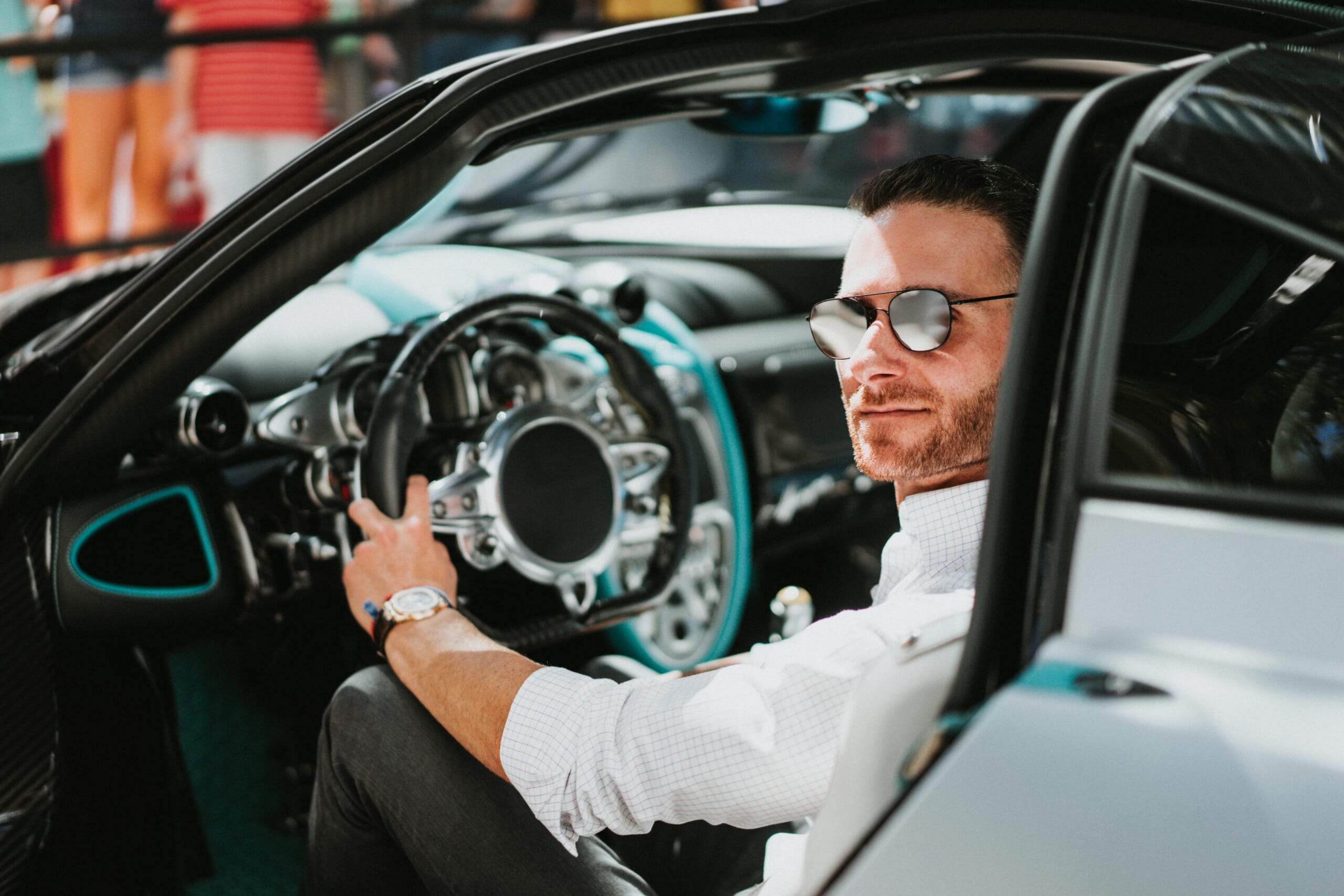
Asked if Paganis sell well, “It isn’t a matter of Paganis selling
well,” David says. “Actually the question that needs to be asked is
how one can obtain a Pagani. That’s the most difficult part. The Pagani brand is sought after by the world’s elite, specifically because of
its rarity.”
“Our client list is a mix of unique individuals from all around the world—they are self-made entrepreneurs, second generation automotive enthusiasts and collectors, female buyers
that appreciate the true element of bespoke design and con
figuration, and the list goes on and on.”
“One of the most incredible assets to me about being a Pagani dealer is having
the opportunity to meet some of the world’s greatest minds
that share the same passion that we do, not just for the automotive industry but for the love of Pagani.”
Much of that has to do with the fact that Pagani was a
pioneer in creating customized cars. Each car that comes
out of his studio in San Cesario sul Panaro is designed and
engineered from scratch, a custom-made suit, created specifically for the client.
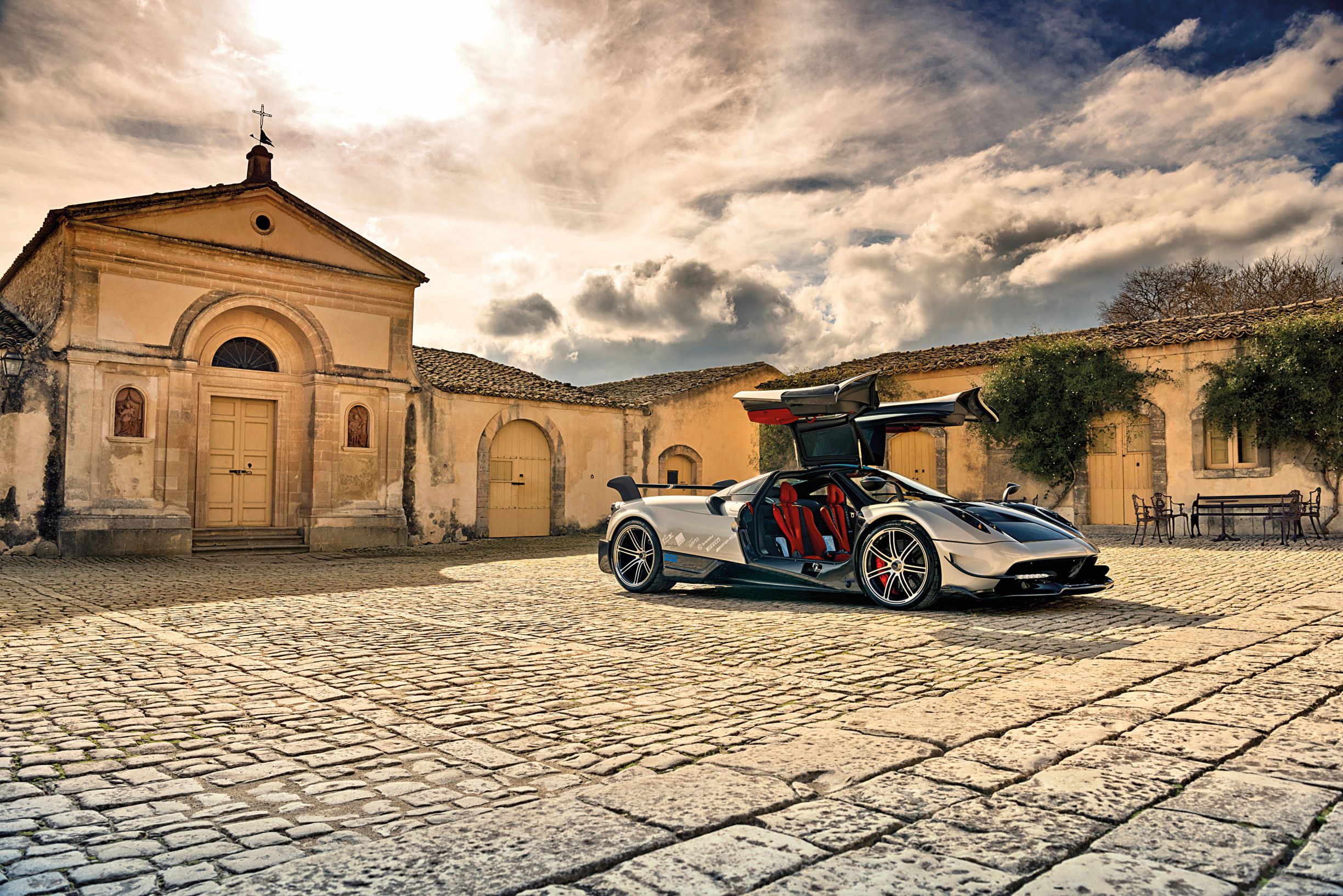
No two Paganis are the same, each car
is customized down to the smallest detail, to the extent that
it is even denominated in a different way. Each one has its
own soul, which mirrors that of the client.
This passion for things automotive was instilled in Pagani from a young age. Horacio was born in rural Argentina
in 1955. His father owned a bakery but the young man
evinced an early infatuation with engineering and loved to
build model cars.
By his mid-20s Pagani designed and built
his first Formula racer, which eventually led to a meeting
with his idol, Argentine race car driver Juan Manuel Fangio,
who dominated the first decade of Formula One racing,
winning the world championship five times.
Fangio would
later write letters of recommendation for Pagani to Ferrari,
De Tomaso, and Lamborghini, where his career as a de
signer would flourish. Later Fangio also helped him obtain
Mercedes-Benz engines for his Zonda project and gave him
precious advice during the design and construction of his
first supercar. Up until his death in 1995, Fangio was a con
stant presence in Pagani’s life and career.
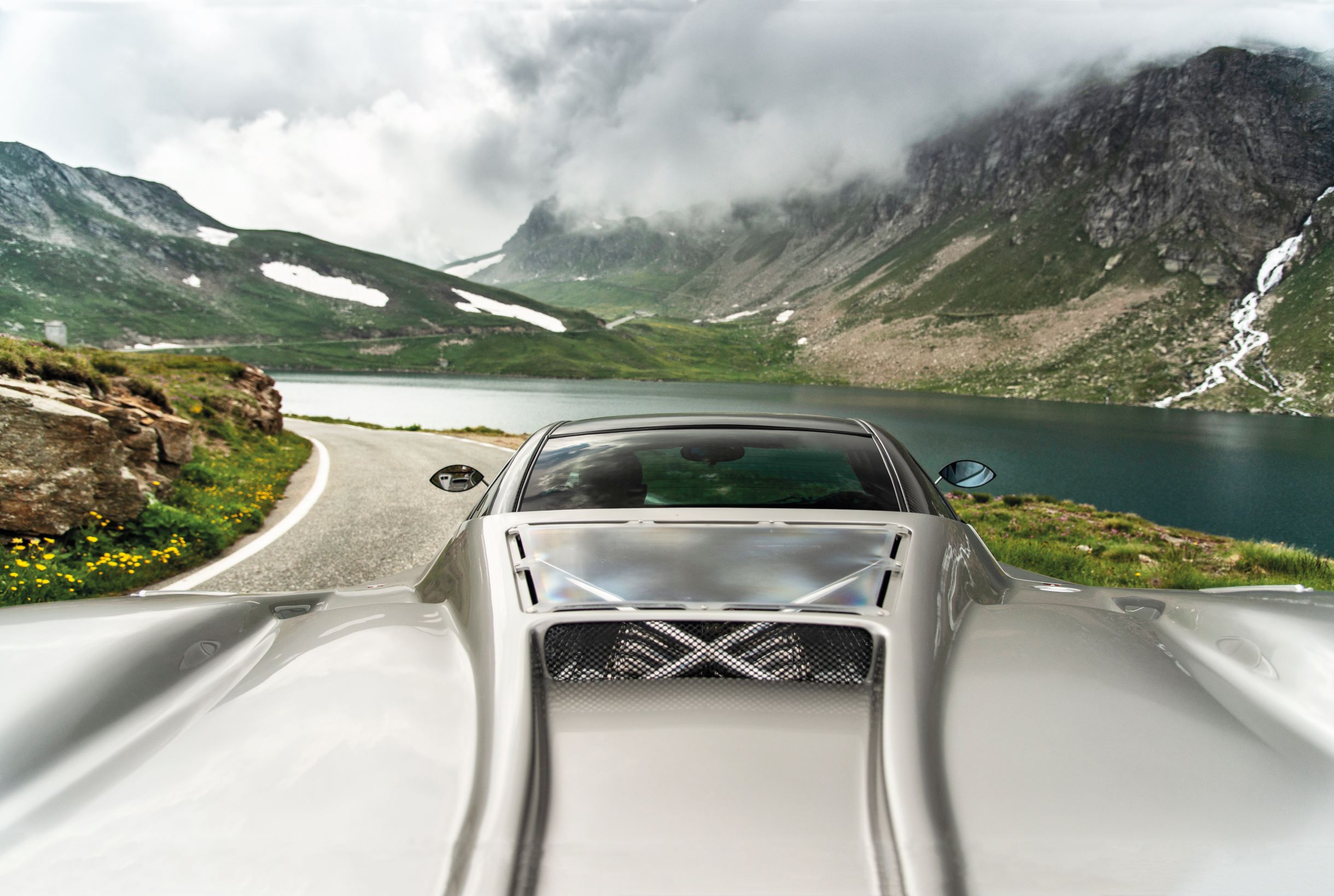
There were times when he certainly needed the support. In the early 1990s, following the crisis triggered by the
First Gulf War, the demand for supercars fell dramatically.
That was a very difficult moment for all car manufacturers.
Many of them cut their workforce or resorted to the state
-subsidized layoff scheme. Some were even forced to close
down completely. Even Horacio worked every [day] for a
year without a salary. In spite of the terrible period, Pagani
decided the time had come to fulfill his old dream, a challenge that everyone around him thought was sheer madness.
In 1992, Horacio left Lamborghini, and with courage,
hard work, and study first of all founded Modena Design,
and then, in the late-’90s, Pagani Automobili, unveiling the
Zonda C12 at the Geneva Motor Show. Just as he would do as a boy when he’d show his models to his friends back in
Argentina.
In addition to Fangio, Horacio Pagani has had a men
tor, an inspirer, and life coach who has directed him and
motivated him to find a way to fulfill his dreams. That per
son is Leonardo da Vinci, who, during the Renaissance, promoted a new approach to art and science, introducing a vision that revolutionized the way of thinking of the entire
human race.
https://www.instagram.com/p/BvRxd-xhhQz
Before Leonardo, art and science were separated by an invisible but definite wall, and one did not venture into the field of the other or vice versa. Leonardo tied
them with an indissoluble thread: “Art and science can walk
together hand in hand.”
Beauty and technology united in a
dance whose purpose is the artistic object.
Horacio Pagani was about 13 years old when he “met”
Leonardo in an issue of Reader’s Digest, one of the most popular magazines in Argentina. His father, Mario, was a voracious reader, but the young Horacio was not far
behind him.
Many of the articles in
Reader’s Digest were superficial, but
there were some that were interesting, and Horacio would never forget
that article on Leonardo and his genius, his curiosity, his passion, his visionary quality, and unique way of interpreting reality and nature. He was truly thunderstruck. In the
space of an afternoon, the life of the young Horacio changed radically.
He had always built model cars, and one idea, almost an obsession, was always there in his mind: going to Modena to design and to build his own car.
https://www.instagram.com/p/BuimTtkhwbV
But Horacio didn’t know which road to take to pursue this aim.
He was undecided and filled with doubts. Engineering or art, which
path should he follow? It was Leonardo’s example from almost five
hundred years before that finally showed him the way.
“I had an epiphany,” Horacio says. “Thanks to Leonardo, I realized that I didn’t necessarily have to choose between mechanical
engineering and the fine arts, but that I could reconcile the beautiful
and the useful, form and function, design and the most advanced
technology. Leonardo became the start of everything for me. Art allied with science.”
“What I admire about Horacio Pagani is that this man is more
than just an automotive manufacturer,” Brett David says.
“He’s an
artist. His vehicles each represent something about their individual
owners while maintaining Da Vinci’s theory ‘form follows function.’ Mr. Pagani will deservedly always be known as one of the most in
credible automotive icons; furthermore, he has preserved the most
important pillars of the Pagani brand — Pagani is a family brand and
the experience when purchasing a Pagani is of the utmost importance, serving as an entrance for the buyer into the Pagani family.”
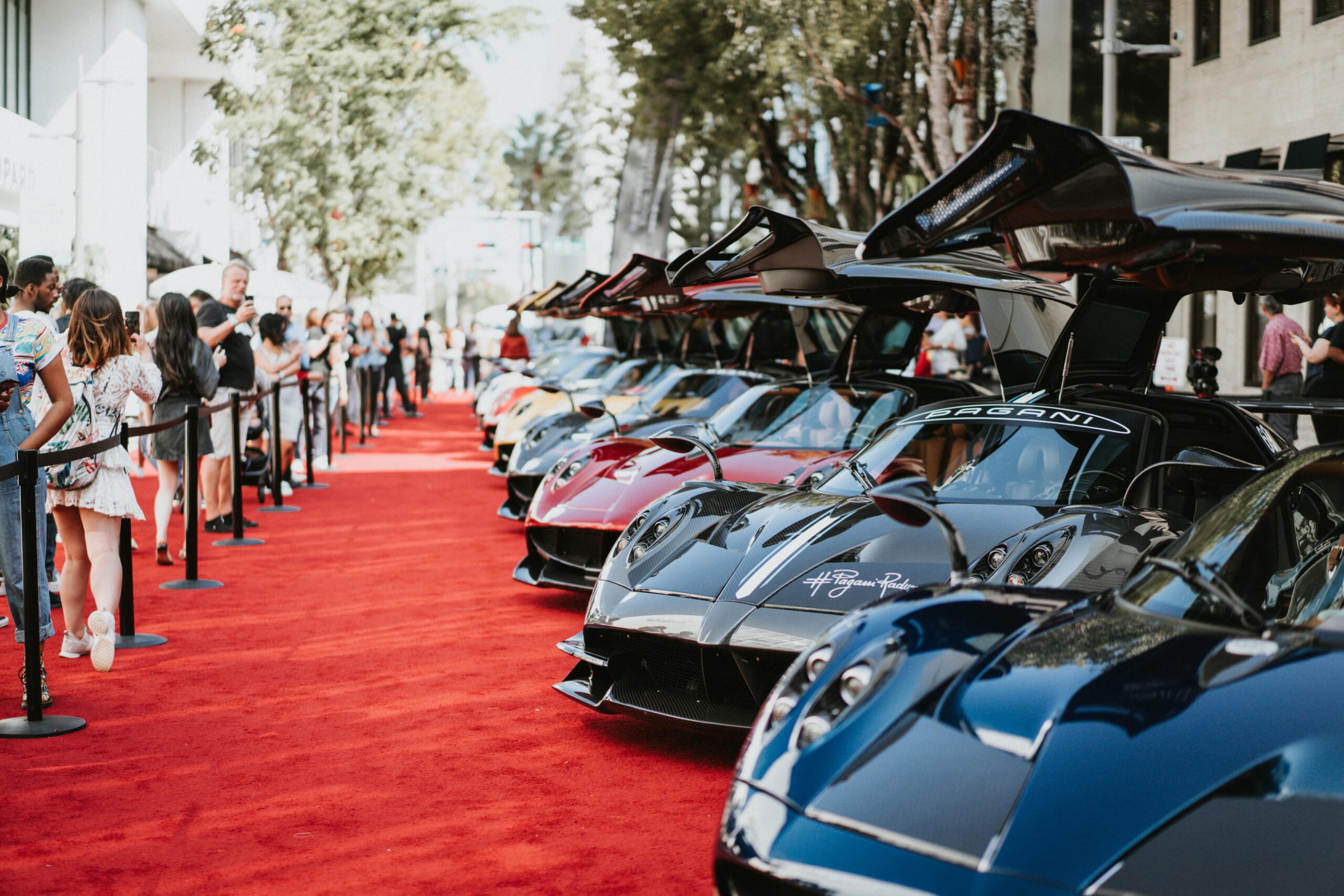
And judging by the smiles on the drivers’ faces, it is one very happy
family indeed.
Partially adapted from Pagani Hypercars: More by Horacio Pagani and
Luca Venturi with photography by Mikael Masoero, published by Rizzoli
New York








